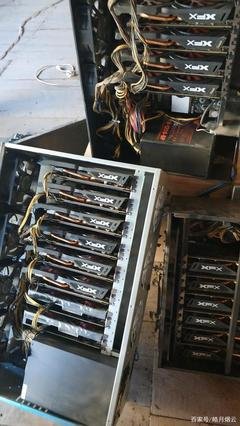In the ever-evolving world of cryptocurrencies, Bitcoin stands tall as the pioneering digital asset that ignited the blockchain revolution. Behind its robust security and expansive network lies an intricate infrastructure powered predominantly by specialized hardware—mining machines. Among these, Ant Miner machines have carved out a significant niche, solidifying their role as indispensable tools in Bitcoin’s mining ecosystem. But what exactly makes Ant Miner machines integral to the mining infrastructure, and how does a dedicated marketplace like Ant Miner Machine Mall contribute to sustaining and expanding this backbone?
Bitcoin operates on a decentralized protocol where miners validate transactions by solving complex mathematical problems. This process, known as Proof-of-Work, demands substantial computational power, typically provided by Application-Specific Integrated Circuits (ASICs). Ant Miner, developed by Bitmain, is one of the most popular ASIC miners, designed for maximum efficiency and power optimization. This makes it a preferred choice not only for individual miners but also for large-scale mining farms seeking higher hash rates and energy efficiency.

However, owning the hardware is just the tip of the iceberg. Effective use of mining machines requires robust hosting environments—specialized data centers tailored to meet the substantial electrical and cooling needs of mining rigs. Here, hosting services come into play, offering miners the ability to deploy their machines in optimized setups that ensure consistent uptime and performance. This is particularly vital for miners operating on thin profit margins, as the efficiency of hosting can directly impact their bottom line.
Ant Miner Machine Mall extends beyond just selling the hardware; it acts as a comprehensive platform that empowers miners to access high-quality machines, secure hosting options, and maintenance services. This centralized hub simplifies the process for cryptocurrency enthusiasts and professional miners alike, bridging the gap between hardware acquisition and operational deployment. Its inventory spans older-generation miners for budget-conscious users to the latest models boasting cutting-edge hashing power.
The diversity of cryptocurrencies also nudges the demand for versatile mining rigs. While Bitcoin remains the dominant player, the rise of altcoins like Ethereum and Dogecoin has influenced mining strategies. Ethereum mining, for instance, traditionally favored Graphics Processing Units (GPUs), but upcoming protocol changes and the prevalence of mining rigs specialized for Ethash algorithms demand adaptability. Some devices in the Ant Miner lineup cater to such flexibility, although Bitcoin ASIC miners remain specialized and focused on SHA-256 algorithms.

The scale of mining infrastructure varies dramatically—from solo miners running a couple of rigs in their basement to sprawling mining farms housing hundreds or thousands of Ant Miner units. Mining farms, often located in regions with cheaper electricity, are the epicenters where this horsepower is concentrated. These farms enable economies of scale, reducing operational costs through bulk energy purchasing and advanced cooling technologies. Moreover, mining farms often collaborate with hosting providers, further enhancing machine uptime and security.
Such ecosystems create a symbiotic relationship: as more miners adopt Ant Miner hardware via marketplaces like the Machine Mall, the mining farms expand, and in turn, the hosting infrastructure scales to accommodate increased demand. This dynamic not only influences Bitcoin’s network security and decentralization but also shapes the broader cryptocurrency economy. Exchanges benefit from the robust transactional throughput confirmed by miners, and holders of Bitcoin see their assets secured by this powerful hashing network.
As Bitcoin’s value waxes and wanes, hosting and hardware sales ebb and flow. Yet, the underlying importance of reliable mining infrastructure remains. Ant Miner Machine Mall serves as a keystone, offering not just machines but tailored solutions to ensure miners stay competitive. Equipped with proprietary insights and comprehensive support, the Mall facilitates upgrades, trade-ins, and even financing options, democratizing mining participation and fostering innovation.
In conclusion, understanding Bitcoin’s backbone is incomplete without appreciating the role of mining machines like Ant Miner and their supporting infrastructure. From the specialized ASIC hardware to the data centers that host them, from marketplaces enabling accessibility to mining farms maximizing outcomes, each element weaves together to fortify Bitcoin’s network. Whether you’re a seasoned miner or a curious newcomer, recognizing these interconnected facets illuminates how platforms like Ant Miner Machine Mall elevate the entire mining ecosystem, fueling both the present and future of cryptocurrency mining.
Leave a Reply to Aelf Cancel reply